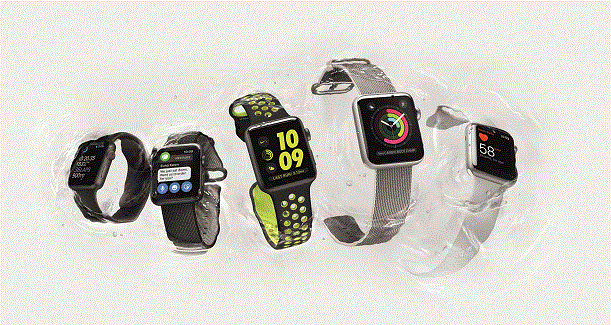Almost one in three people stop using their smartwatches and fitness trackers because they do not find them useful, get bored of them, or they break, according to a new survey by Gartner.
The research house said the “abandonment rate” of smartwatches is 29 percent and with fitness trackers it is 30 percent. It did not specify how soon people gave up their wearables after purchase.
Angela McIntyre, Research Director at Gartner, said: “Dropout from device usage is a serious problem for the industry. The abandonment rate is quite high relative to the usage rate.
“The uses for wearable devices need to be distinct from what smartphones typically provide. Wearables makers need to engage users with incentives and gamification.”
The survey, which polled 9,592 consumers in the US, UK and Australia, found that around 10 percent and 19 percent use smartwatches and fitness trackers respectively. Only eight percent of consumers have used virtual reality (VR) glasses or head-mounted displays.
However, adoption of wearable devices is up on last year. Usage of both smartwatches and fitness trackers is marginally higher in the US, at 12 and 23 percent, compared with the UK, at nine and 15 percent. The US figures were eight and 17 percent a year ago, and UK numbers were five percent and 10 percent.
Gartner warned wearables have so far found a captive audience of early technology adopters, mostly under 44 years of age, and will need to work harder to capture the mass market. The survey raised questions about their value for money, given their perceived usefulness.
“Continued growth in the adoption of smartwatches and fitness trackers will now be from mainstream consumers instead of early technology adopters,” said McIntyre.
“The greatest hurdle for fitness tracker and smartwatch providers to overcome is the consumer perception that the devices do not offer a compelling enough value proposition.”
Design was also cited as an issue, with 29 percent of respondents claiming fitness trackers are “neither fashionable nor attractive”.
Gartner said makers without strong brands must accept a lower premium for their wares, whilst retaining build quality and performance, and that “unappealing” designs should be countered by partnering with fashion brands that have experience in “setting style trends” and “marketing lifestyle devices”.
According to reports last week, Lenovo-owned Motorola, an early champion of Android Wear, has pulled production of further smartwatch devices, suggesting their appeal is too narrow.
However, analyst IDC said that, despite shrinking sales of smartwatches in the third quarter, the overall market for wearables grew by 3.1 percent, to reach 23 million units in the period.
IDC said basic wearables, primarily comprised of fitness bands, accounted for 85 percent of the market, and experienced double-digit growth. IDC said momentum will continue through the holiday season in the fitness tracker space.
Jitesh Ubrani, Senior Research Analyst for IDC, said: “It’s still early days, but we’re already seeing a notable shift in the market. Where smartwatches were once expected to take the lead, basic wearables now reign supreme.
“Simplicity is a driving factor and this is well reflected in the top vendor list as four out of five offer a simple, dedicated fitness device. Meanwhile, from a design perspective, many devices are focusing on fashion first while allowing the technology to blend in with the background.”
Ramon Llamas, Research Manager for IDC, added: “Smart wearables have been down in recent quarters, but clearly not out. As user tastes change, so will their needs. That’s the opportunity for smart wearables with multi-functionality and third-party applications, both for consumers and business users.
“To get there, we need to see more intuitive user interfaces, seamless user experiences, standalone connectivity, and applications that go beyond health and fitness and into personal and professional productivity.”



